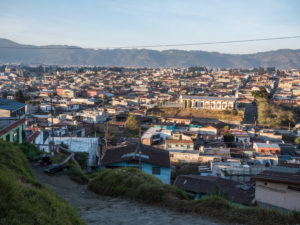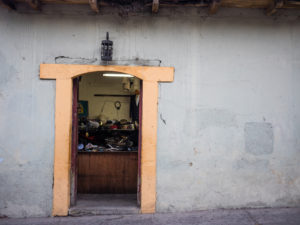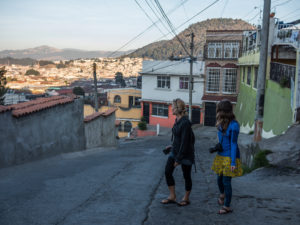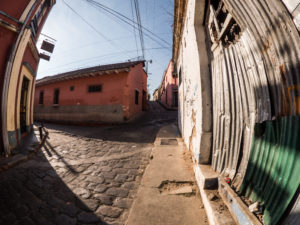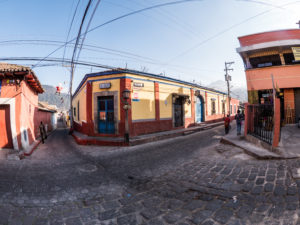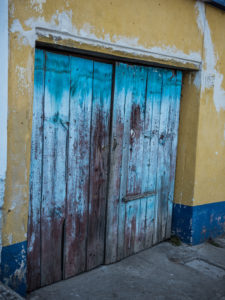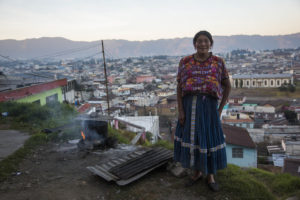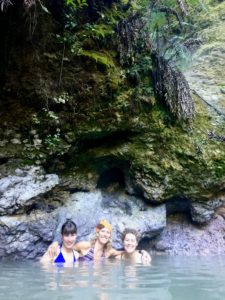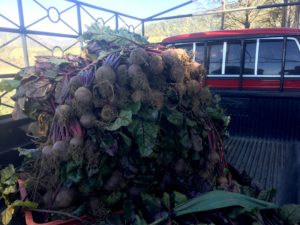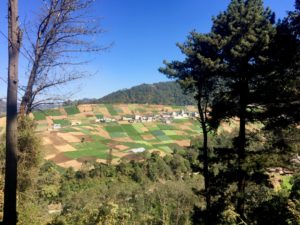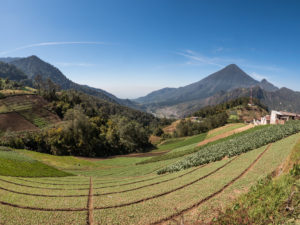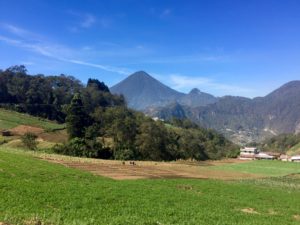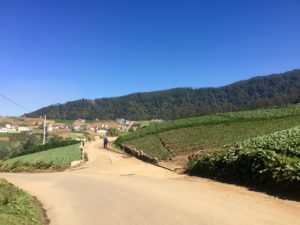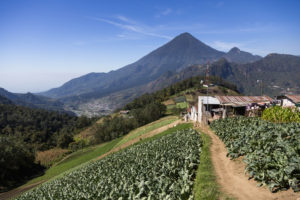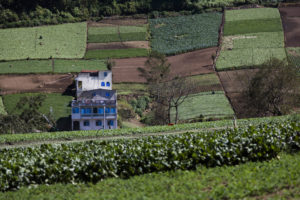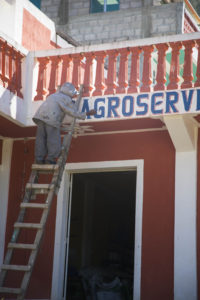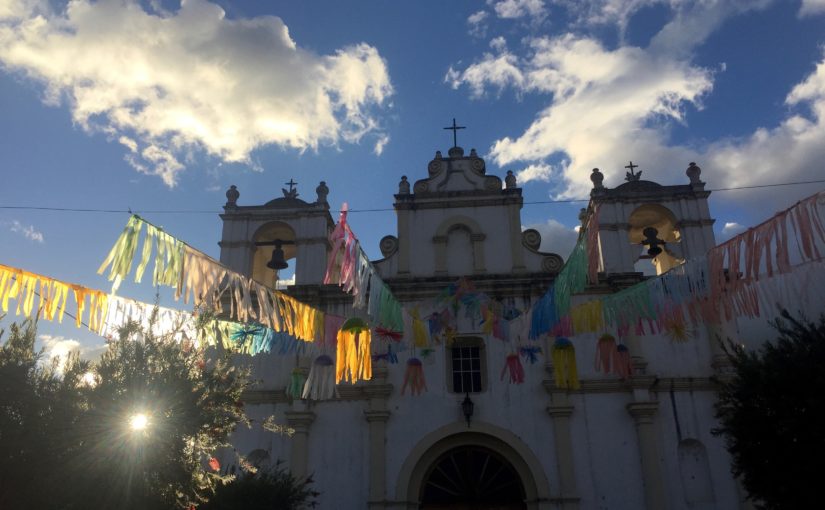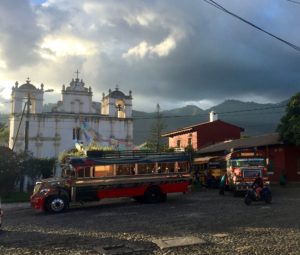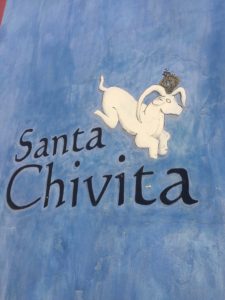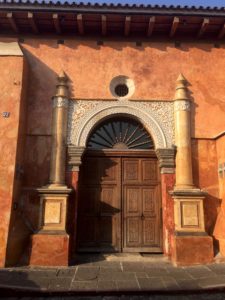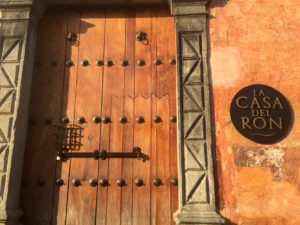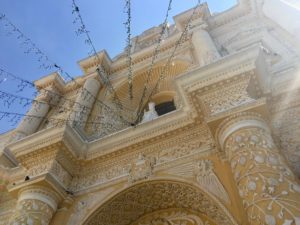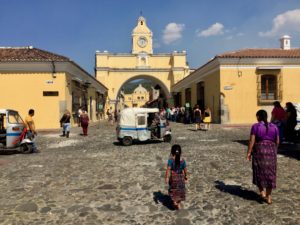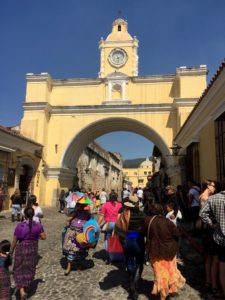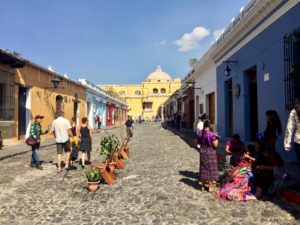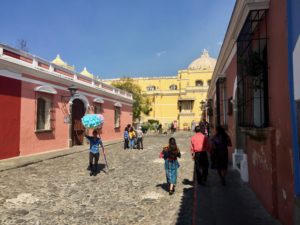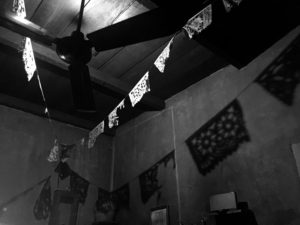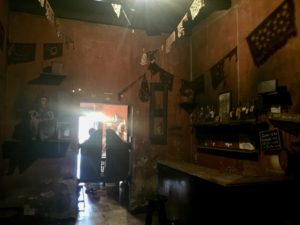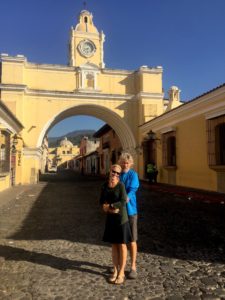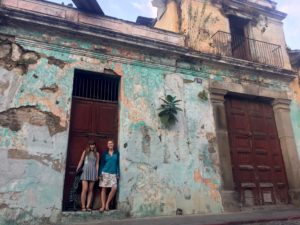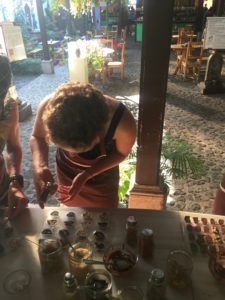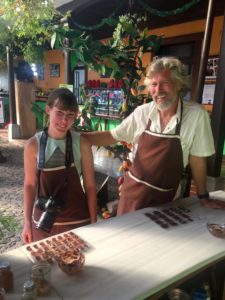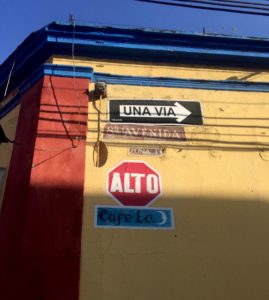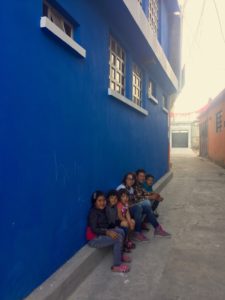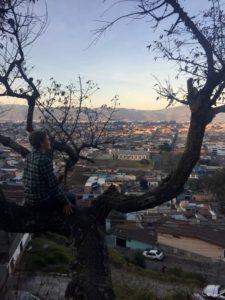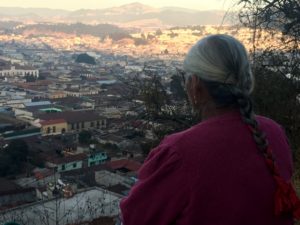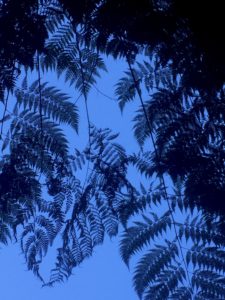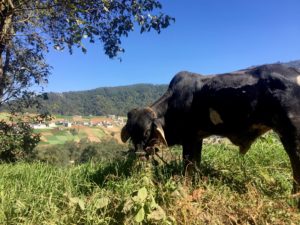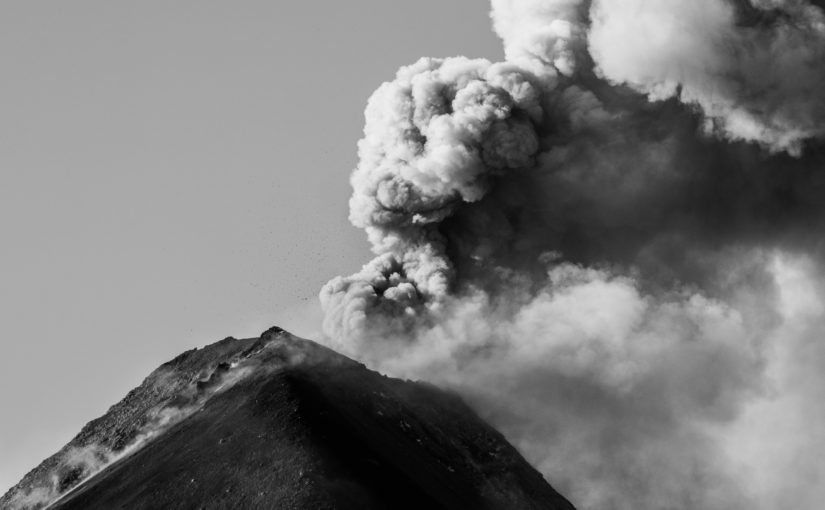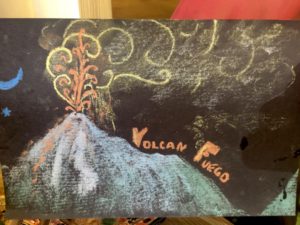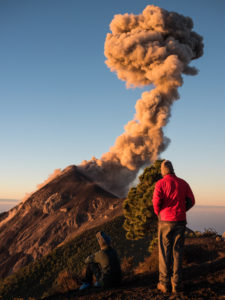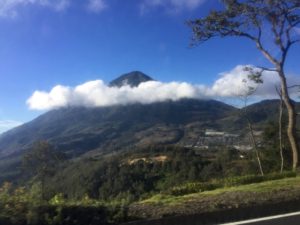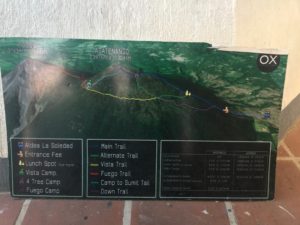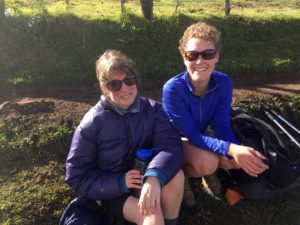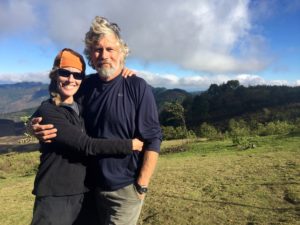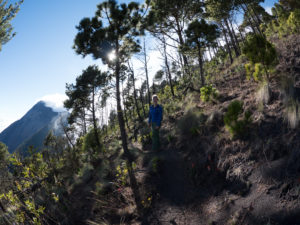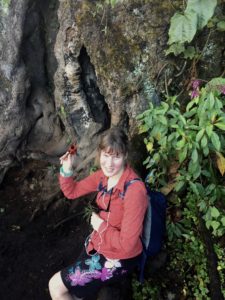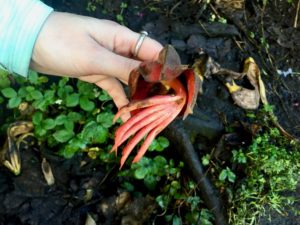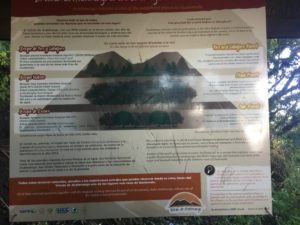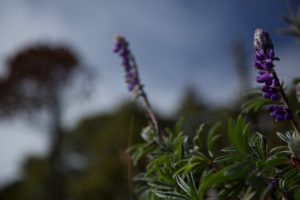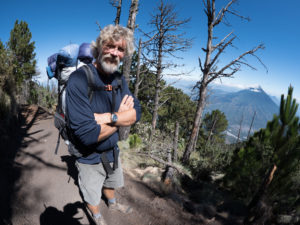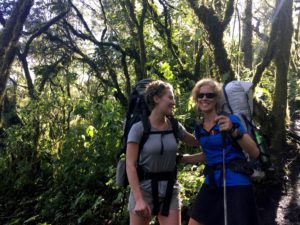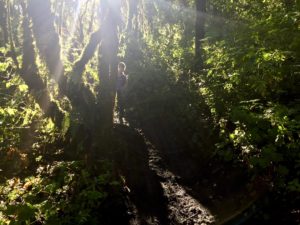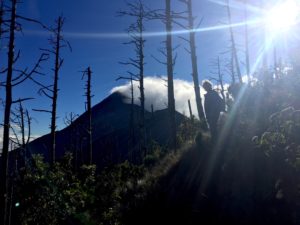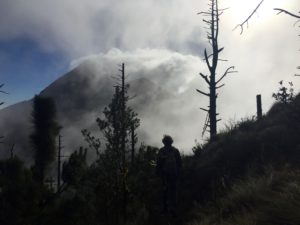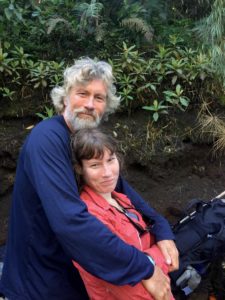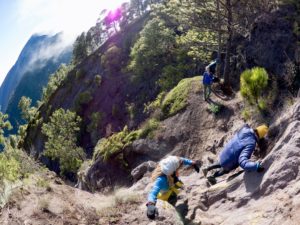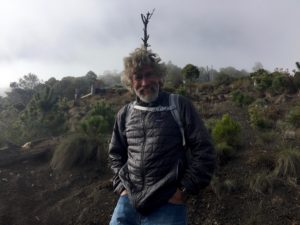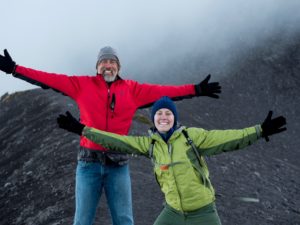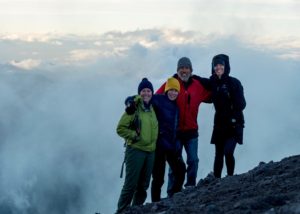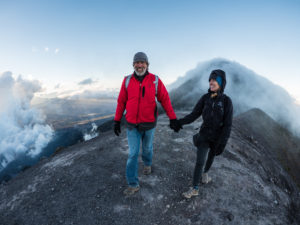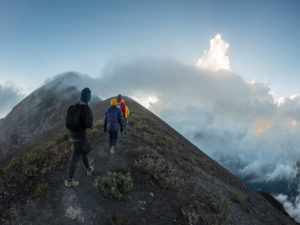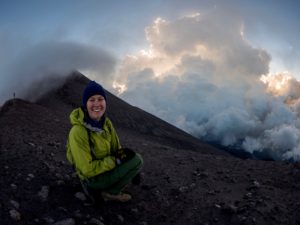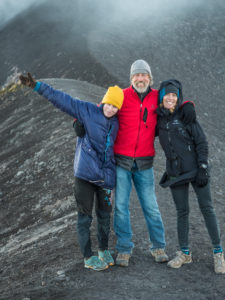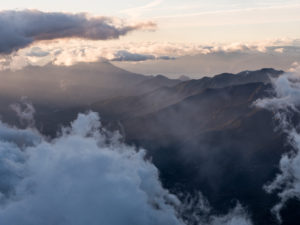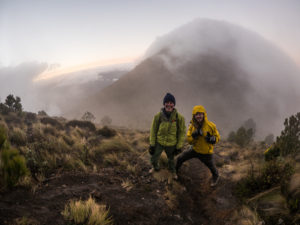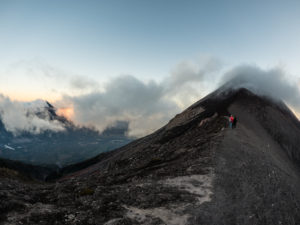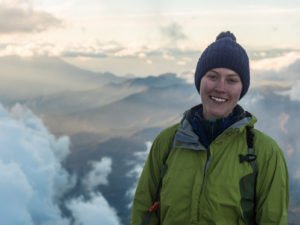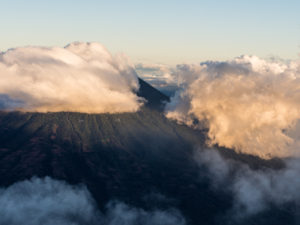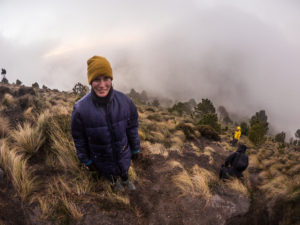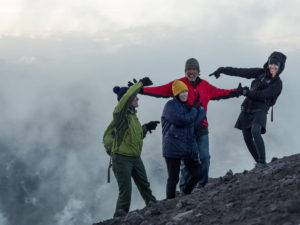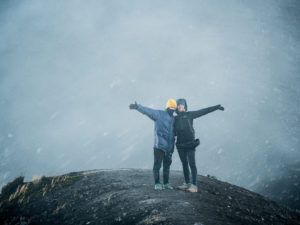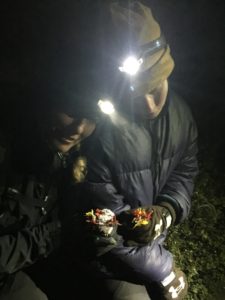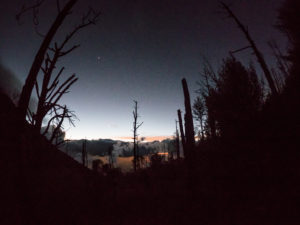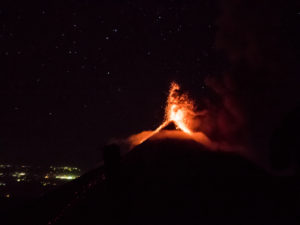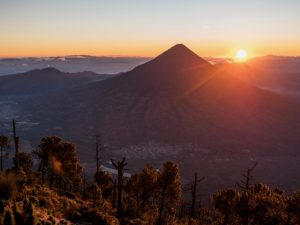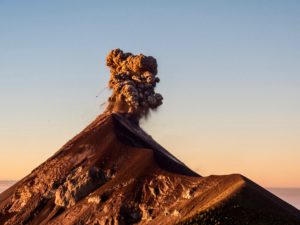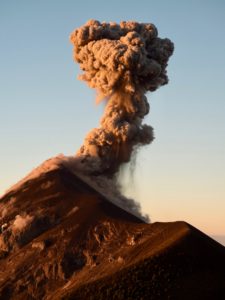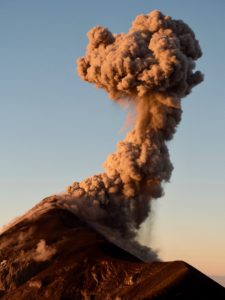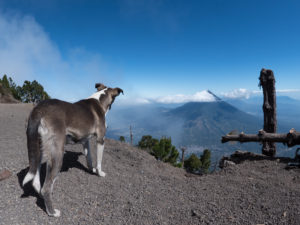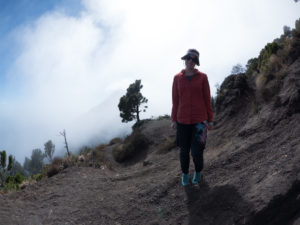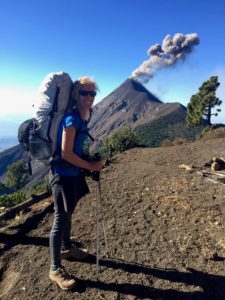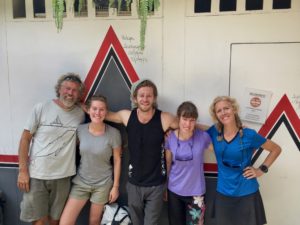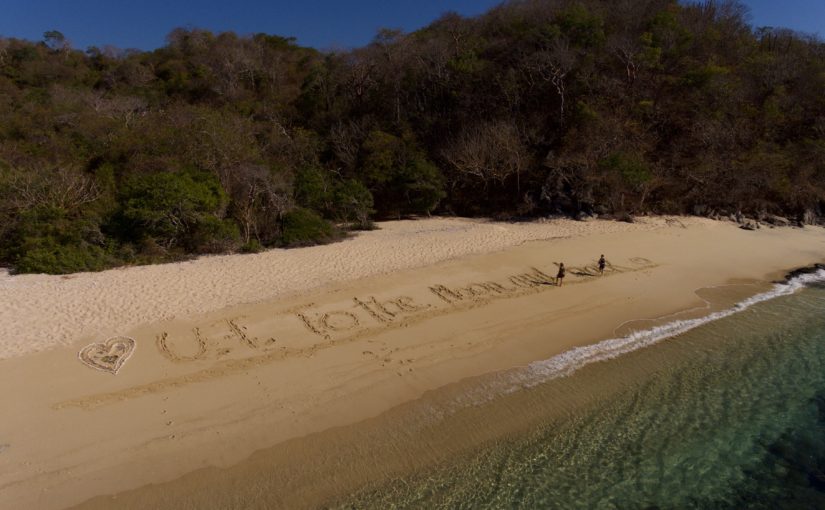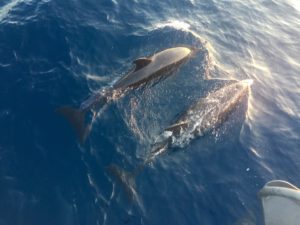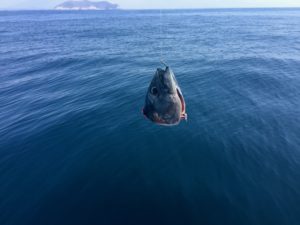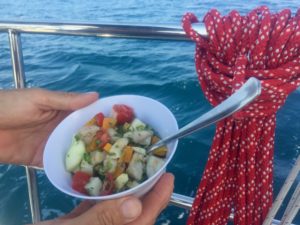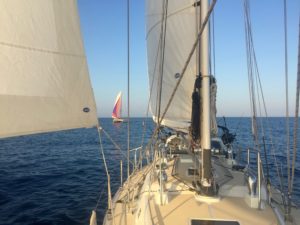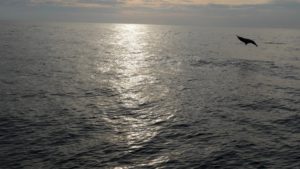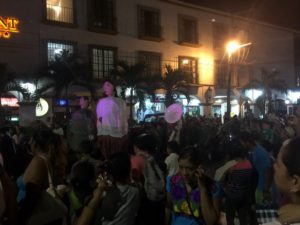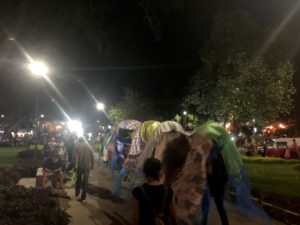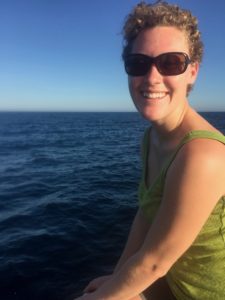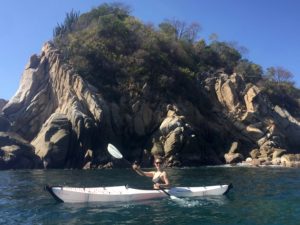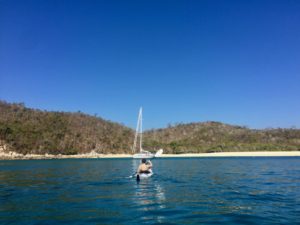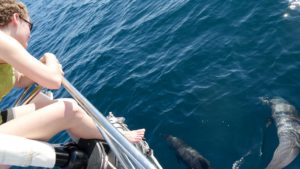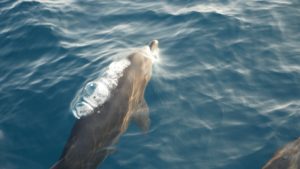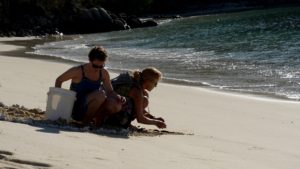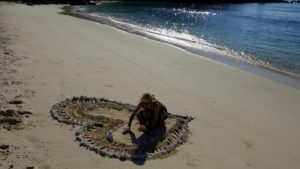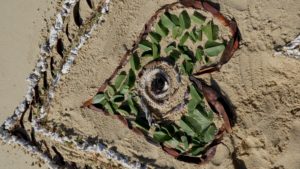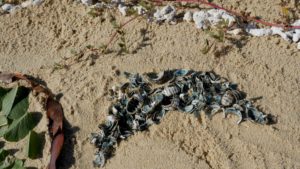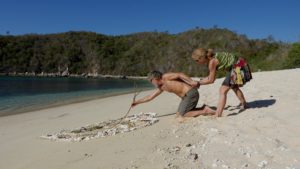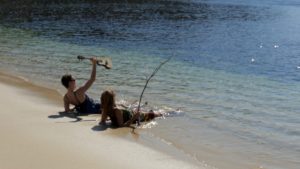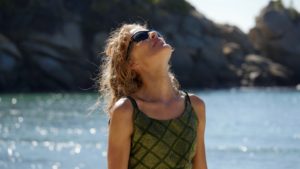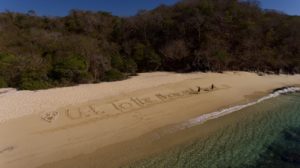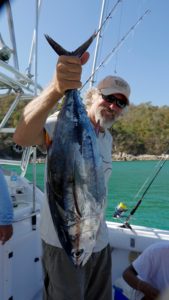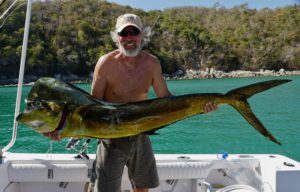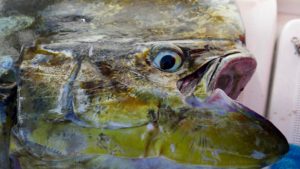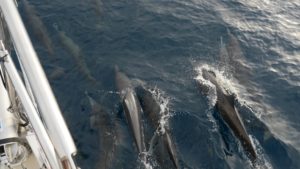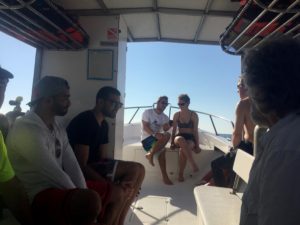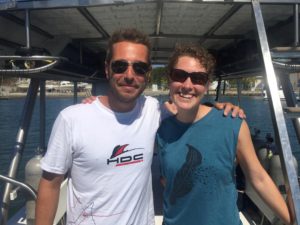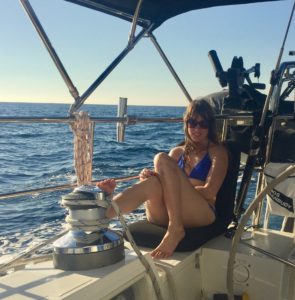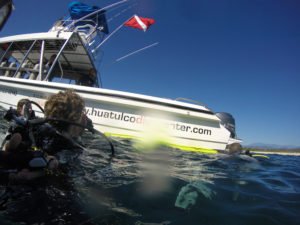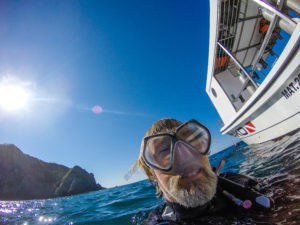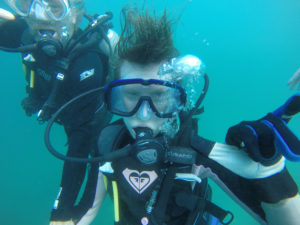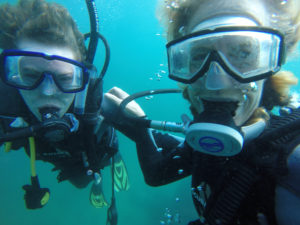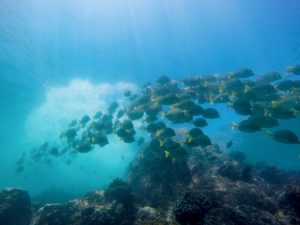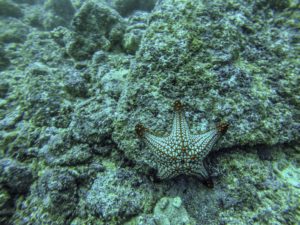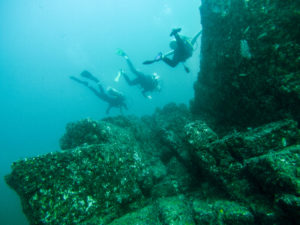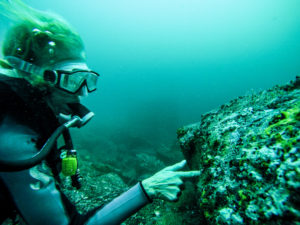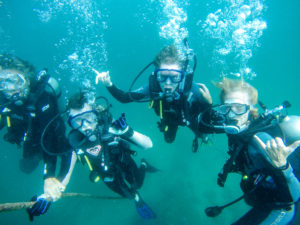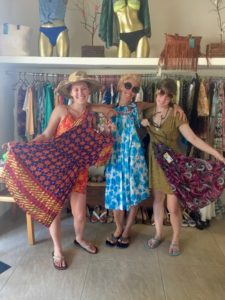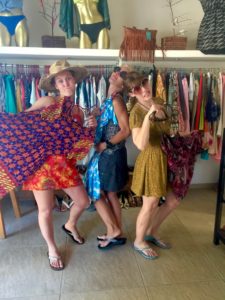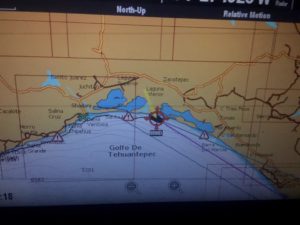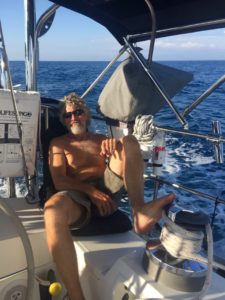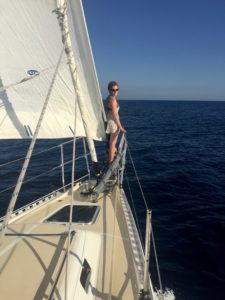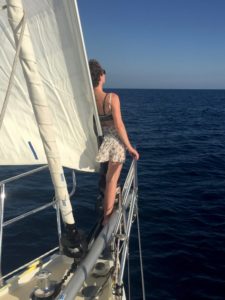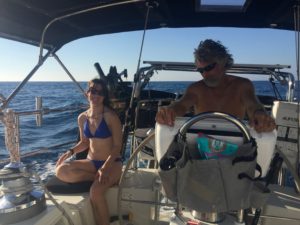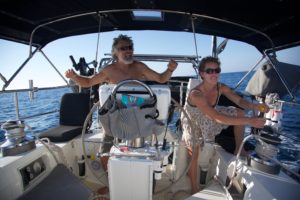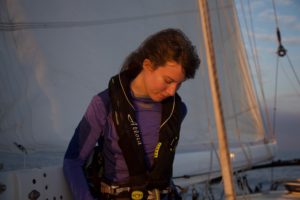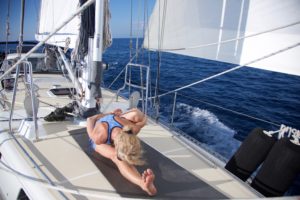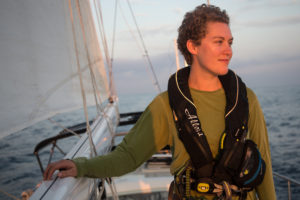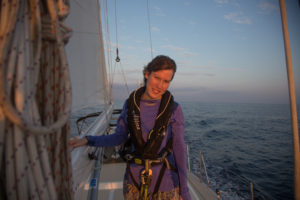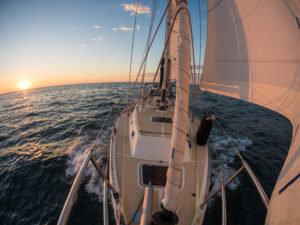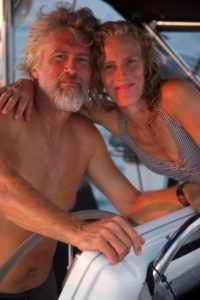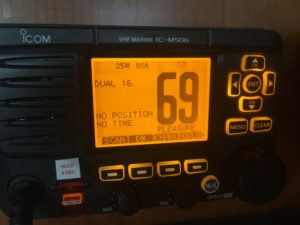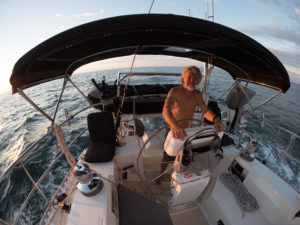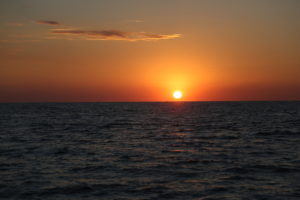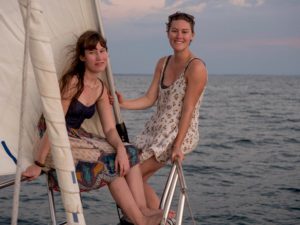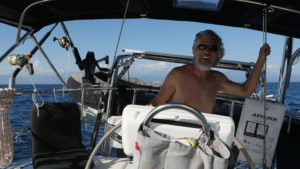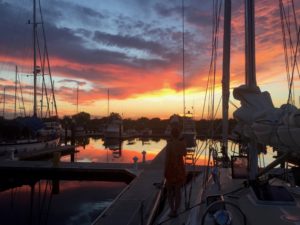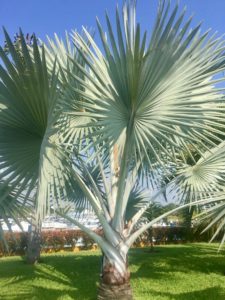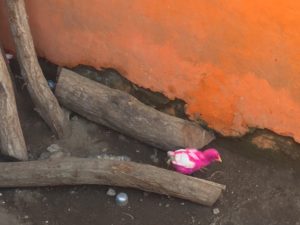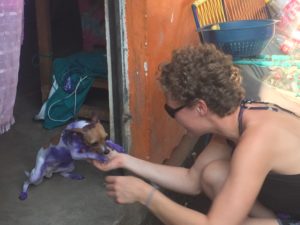We’d heard that the only marina in Guatemala (only an hour from Antigua) wasn’t a really hospitable place for yachts, so we opted to hire a car/driver from Tapachula (Puerto Chiapas) to take us the 7 hours or so to get to Antigua, Guatemala. Turned out to be a good idea and we were able to see the landscape of Oaxaca in Mexico and the western side of Guatemala. The border crossing was fine, but the woman officer helping us was in a pretty grouchy mood until a gecko landed on my head – my shrieking made her laugh and she then warmed. Bienvenidos!
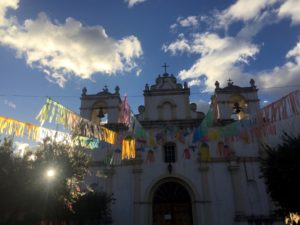
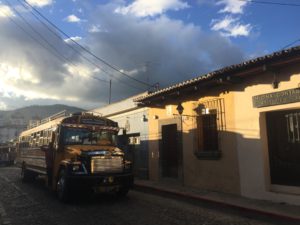
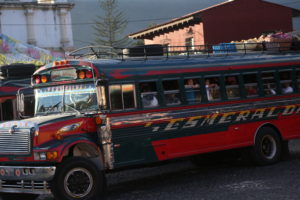
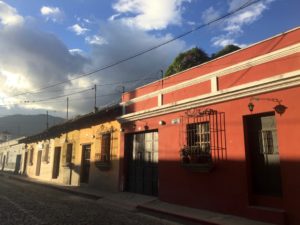
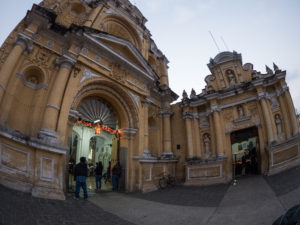
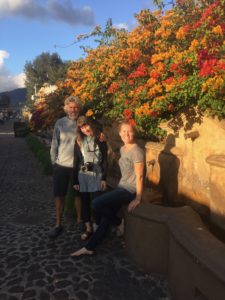
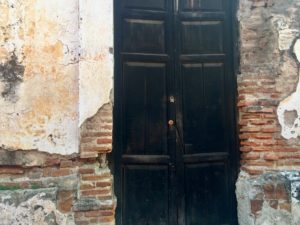
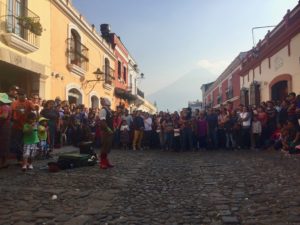
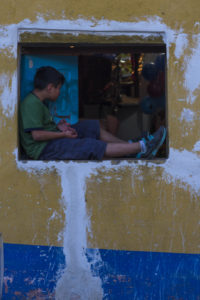

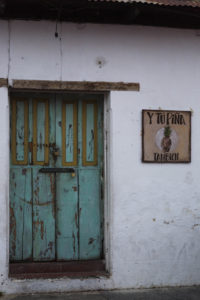
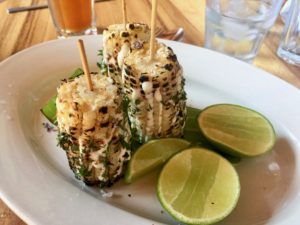
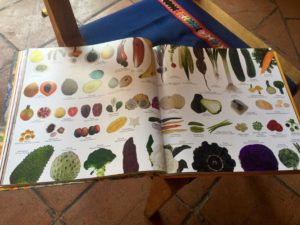
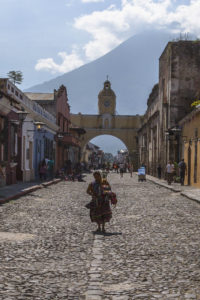
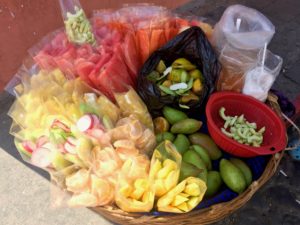
Volcan Acatenango and Volcan Fuego expedition – SEE blog post!!!
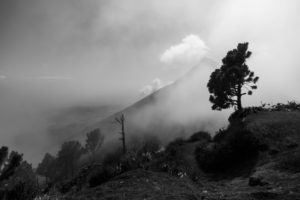
New Year’s Eve in Antigua:
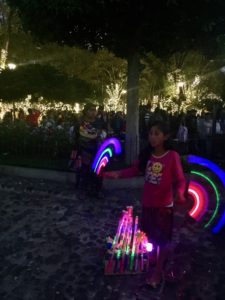
Ten New Colors
“The lakes and rivers that no one had discovered in these virgin jungles of America, ripple dunia waters, which will no longer be so when the are seen. Dunia… Dunia…. Dunia
— Otto-Raul Gonzalez (painted on the wall in original Spanish and English translation at a tiny little bar, Cactus Tacos in Antigua, Guatemala)
We were drawn in by the live music, eight people, sax, drums and guitars, two back up singers, jammed in the corner. Actually I was drawn from a block away by the look of the outside, totally surprised Diana and the girls (who know me better) by insisting we cut across to check it out. It didn’t look like you could fit another person in and we chickened out, but then were drawn back and crowded in around a small table. The elbow to elbow band were all friends, jamming for New Year’s Eve. A woman Diana’s age came over, the owner of Cactus tacos, excited to see if we liked the music and to tell us that the young woman mesmerizing us with a solo was singing in public for the first time. The bartender wore a T-shirt: Trump es un Pendejo. Yep.
A mural of the Mexican revolutionary, Zapata on the wall behind the band, lyrics in Spanish and English.
I kept re-reading the quote on the wall. Dunia, dunia, dunia… It haunted me. I had no idea what the word was, but it seemed like the perfect word for an indescribable idea. Something that is gone if it is witnessed. I didn’t know the poet who wrote it was describing a color. One of ten new colors.
Maddi did a little Internet search that night, Otto-Raul Gonzalez was once minister of land reform in Guatemala, way back in the 50’s or 60’s, when Guatemala’s government was overthrown by the CIA. He was exiled to Mexico where he continued to write.
Where else might you find one of his books, more about “Dunia,” than some bookstore in Antigua, and the most famous/infamous one, attached to the No Se Cafe (where you get a free bear with each purchase). A warren of rooms trying (maybe a little too hard, maybe) to capture that speakeasy feeling. A Mezcal bar with a two shot minimum. Illegal Mezcal. Another tiny bar with live music, a woman with a beautiful Alto voice accompanied by a fiddler. Dim, dim, dim.
The guy in the bookstore, who works there primarily for free drinks, was surprised to hear us ask about Otto-Raul’s poetry. He’d heard of a translation of Diez Colores Nuevos, and he even thought he might have a copy and searched the little bookstore, but eventually decided that he must have loaned it out. He gave us a note for two free beers for a couple of other titles we purchased from the eclectic mix.
He could only think of one person who might have a copy and it was the woman who owns Cactus Tacos, Otto’s daughter!
She was delighted to see us again, and even more so, to learn we came looking for her father’s book. She told us a little bit about him, about growing up in Mexico City, his sense of humor and about his emotional ties to his exiled country. He asked for his ashes to be scattered on Lake Atitlan, but was careful to tell his children raised in Mexico that he meant the small lake of his childhood, not the big lake that draws tourists from around the world. She got a little teary-eyed remembering him, and I think our interest really meant a lot. She signed and gave us one of her last copies, along with a round of tequila shots, pictures and exchanges of Facebook info. Our trip to Guatemala was brief, but left us with a bit of poetry that will resonate for a long time.
Here’s Dunia from Diez Colores Nuevos:
Dunia are the smiles which lovers
exchange like fools
Dunia is the flower which never looks at itself
and dunia, too, is the first smile
of a new born child.
Dunia is the color of all the immaterial,
the color of absence
the color of goodbyes
and the color of music and poetry
when they go for broke.
The skin of a colt or calf
three days old is an intense dunia
the same as an embryonic pearl
the stars that can’t be seen from Earth,
closed petals of flowers
and the eyes of babies sleeping
in their mother’s womb.
What has never been touched is dunia
like the atmosphere of mirages
and the feathers of birds
we hear singing, but can’t see
The lakes and river that no one has discovered
in these virgin jungles of America
ripple dunia waters
which will no longer be so when they are seen.
Dunia… Dunia… Dunia…
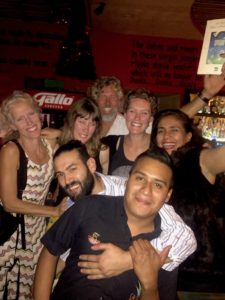
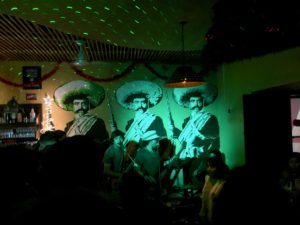
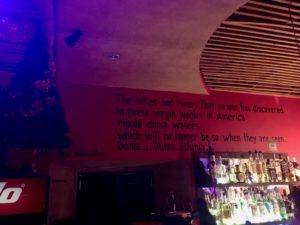

(Cafe I don’t know).
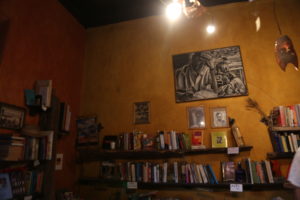
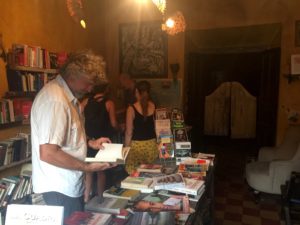
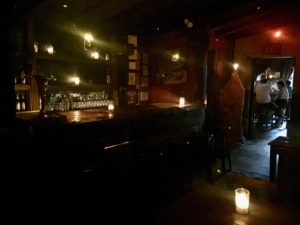
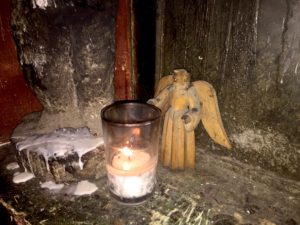
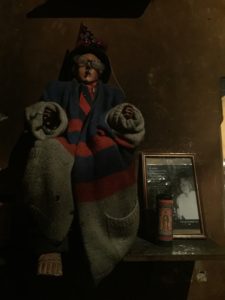
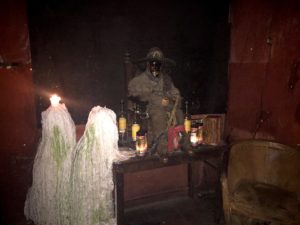
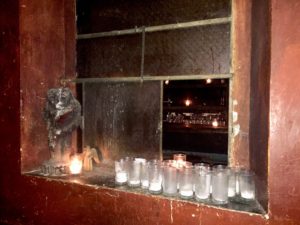
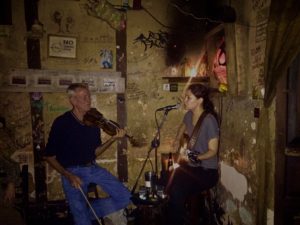
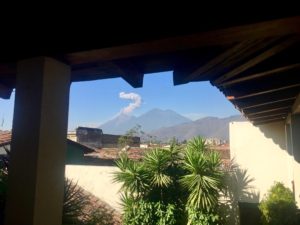
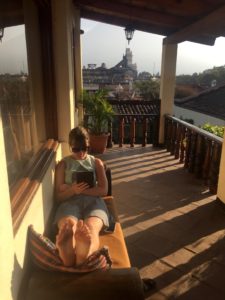
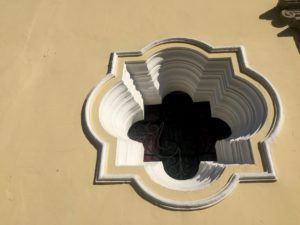
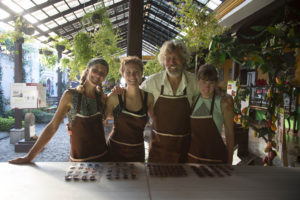
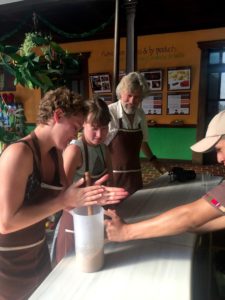
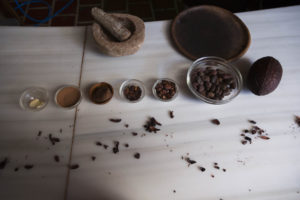
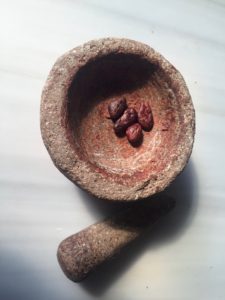
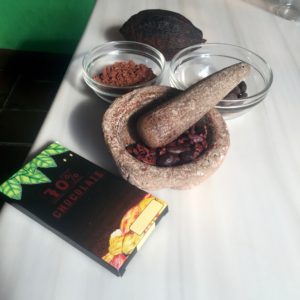
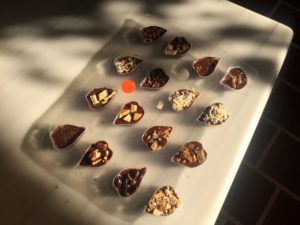
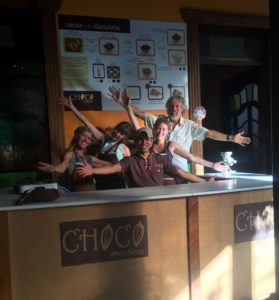
We took a shuttle for around 4 hours to the Central Highlands’ Alto Plano town of Quetzaltenango. Never did see a quetzal bird, but did manage to spend some of the local currency, called quetzales.

